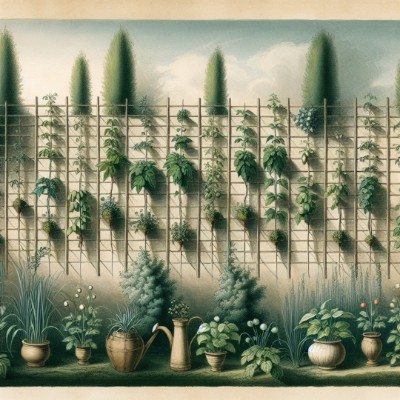Guerilla Gardening: 5 Simple Steps to Begin Your Journey

Guerilla Gardening
Guerilla gardening transforms neglected public spaces into vibrant pockets of greenery. Armed only with seeds, spades, and quiet determination, everyday gardeners reclaim abandoned lots, sidewalks, and forgotten corners. You don't need a permit—just grit and intention—to start guerilla gardening in your neighborhood. Here's how to get your hands dirty, beautify your community, and reconnect with urban nature in five easy steps.
🌱 Guerilla Gardening Cheat Sheet: 5 Simple Steps 🌱
1. Scout Locations
- 📍 Choose neglected public spaces: vacant lots, sidewalk cracks, median strips.
- 🔎 Evaluate sun exposure, soil quality, and foot traffic.
2. Select Hardy Plants
- 🌼 Pick native, drought-tolerant, self-seeding varieties (echinacea, poppies, calendula).
- 🥗 Include edible herbs (mint, basil, thyme) for nutritional benefit.
3. Prepare Seed "Bombs"
- 💣 Mix clay, compost, water, and seeds into walnut-sized balls.
- ☀️ Dry overnight at room temp (68°F/20°C).
4. Plant Strategically
- 🌙 Plant at dusk or dawn for low visibility.
- 💦 Water initially, then let rainfall sustain.
5. Maintain & Monitor
- 🌿 Weed occasionally and remove litter regularly.
- 👥 Engage neighbors to support and replicate.
Quick Stats
- 🌎 Guerilla gardens improve air quality, biodiversity, and community health.
- 🥕 Urban edible gardens boost fresh produce access by up to 30%.
Guerilla Gardening: What's the Big Idea?
I distinctly recall my first foray into Guerilla Gardening—midnight escapades armed with wildflower seeds, quietly reclaiming neglected urban spaces. A touch of botanical rebellion, you might say, lending color and life where concrete has taken over.
Ready to give this botanical uprising a try? Here's how.
Step 1: Scout Out Your Territory
First things first—identify overlooked patches of soil around your city or town. Forgotten flower beds, sidewalk cracks, deserted planters—these are prime spots for your stealthy green revolution.
- Aim for publicly accessible, neglected spaces.
- Ensure safety and discretion; avoid private property.
One spring evening, I discovered a patch of abandoned earth beside an old post office. Perfect spot—I thought—to sprinkle some cosmos and marigolds.
Step 2: Choose Your Botanical Arsenal
Opt for hardy flowers or native wildflowers that require minimal upkeep and thrive in local conditions. Easy-to-grow annuals and perennials suited to your climate zone (check your USDA zone or local gardening maps) are ideal.
- Sunflowers, zinnias, marigolds—tough and cheerful.
- Native wildflowers like coneflowers and black-eyed Susans.
One summer, in scorching temperatures (about 90°F / 32°C), my guerrilla-sown sunflowers stood proudly despite weeks of neglect.
Step 3: Prepare Seed Bombs for Stealthy Planting
Seed bombs—compact balls of clay, compost, and seeds—are your secret weapon. They make planting quick, effortless, and discreet.
"Seed bombs date back to ancient agricultural methods; they're the ultimate expression of planting as rebellion."
Make your own seed bombs by mixing:
- 5 parts red clay soil
- 3 parts compost or potting mix
- 1 part seeds
- Add water, roll into walnut-sized balls, and let dry for 24 hours.
Trust me—seed bombs thrown casually into neglected plots get the job done swiftly and secretly.
Step 4: Execute the Midnight Mission
Guerrilla gardeners appreciate the cover of darkness. Late-night or early dawn—take your pick.
- Wear dark clothing, bring minimal equipment, stay quiet.
- Toss seed bombs or gently plant seeds directly into the soil.
On a misty night last fall, planting wildflowers along a forgotten median strip felt like a quiet act of rebellion and renewal in my neighborhood.
Step 5: Check Back Discreetly and Celebrate the Growth
Patience becomes your virtue here. After planting, keep an eye on rainfall forecasts to give seeds their best shot.
Check on site progress discreetly and consider watering briefly in dry spells. Then, wait for nature to reward your effort.
"Guerilla Gardening is botanical activism—proof that a small seed holds big power."
Nothing beats the quiet thrill months later when blooms appear unexpectedly, turning grey urban corners into vibrant patches of life.
Frequently Asked Questions about Guerilla Gardening
What are the best plants to use for Guerilla Gardening?
The ideal plants for Guerilla Gardening include hardy, low-maintenance varieties such as wildflowers, native perennials, and drought-tolerant herbs. Choosing resilient plant species adapted to local climates ensures thriving gardens and minimal upkeep.
How can I discreetly water and maintain guerilla gardens?
Utilize discreet watering methods such as water-retention crystals or biodegradable gel packets that slowly release moisture. Selecting drought-resistant plant species also reduces the frequency of required visits, keeping the garden vibrant without drawing unwanted attention.
What is the ideal timing for planting a Guerilla Garden?
Planting should occur during mild weather periods, typically early spring or late fall, when temperatures range between 45–65°F (7–18°C). These seasons provide optimal conditions for establishing root systems and increasing plant survival rates.
How can I encourage community participation without compromising garden secrecy?
Encourage community involvement by leaving subtle, anonymous indicators of participation, such as small, handmade signs or painted stones. These visual cues invite others to join discreetly and foster a sense of collective ownership without compromising the garden's privacy.
How do I select the best locations for effective Guerilla Gardening?
Identify underutilized public spaces with sufficient sunlight and minimal pedestrian traffic. Vacant lots, roadway medians, and neglected park corners offer excellent spots for successful Guerilla Gardening, providing visibility while maintaining anonymity.
Guerilla Gardening speaks clearly to anyone who cares about reclaiming forgotten urban spaces. With a bit of grit, sweat, and quiet rebellion, ordinary people turn unused plots into vibrant community corners. This is gardening as activism—hands in soil, eyes open, changing neighborhoods one plant at a time. So grab your seeds, scout your spot, and plant boldly. Because in the end, guerilla gardening isn't about permission—it's about bringing life back into places we've overlooked for far too long.
Find out which plants will thrive in your garden!
Answer a few fun questions and get custom plant recommendations perfect for your space. Let’s grow something amazing together!

start your season





